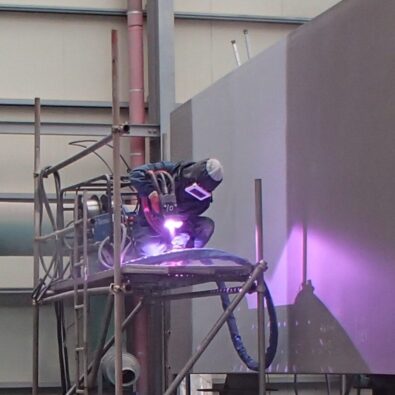Thermal spray coatings (metallizing), an innovative process that involves the application of metallic coatings to various surfaces, has been a game-changer in enhancing the durability of materials. This article delves into the intricacies of metallizing, exploring its history, applications, standards, and methods to amplify its durability.
Metallizing emerged as a practical technique in the early 20th century. Initially, it was primarily used for decorative purposes but rapidly expanded to industrial applications due to its protective qualities. Over the decades, advancements in technology have refined metallizing processes, making them more efficient and adaptable to diverse industrial needs.
Metallizing finds applications in various industries, including automotive, aerospace, infrastructure, and marine. It’s especially valued for its sacrificial corrosion resistance and is used in the protection of steel structures like bridges, tanks, and pipelines, extending their lifespan significantly. Metallizing is a sound alternative to hot dip galvanizing of large structures. To maximize its longevity, metallizing should be used on simple geometries (i.e., large flat, or round shapes) and in controlled environments such as paint shops and enclosed fieldwork.
NACE No. 12 is the main metallizing standard. This standard outlines the specifications for thermal spray coatings (metallizing) of aluminium, zinc, and their alloys and composites for corrosion protection of steel. It emphasizes the importance of selecting the appropriate materials and processes to achieve optimal protection against corrosion.
The key to successful metallizing lies in meticulous abrasive blasting surface preparation to create a suitable profile for the thermal spray coating chemical and mechanical adhesion. The application of metallizing also requires precise control of the ambient conditions and spray process. Verification tests such as bend tests, adhesion strength, and dry film thickness measurements, are essential to ensure optimal performance, uniform coverage, and suitable coating thickness.
Metallizing effectively protects against corrosion in various environments, classified under ISO 9223 Corrosion of Metals and Alloys. The effectiveness of metallizing in different corrosivity categories—from mild (C1) to extreme (C5) environments—demonstrates its versatility and effectiveness in prolonging the life of steel structures. For instance, AMPP (formerly NACE) estimates up to 33 years of longevity before any maintenance work is needed for metallized steel structures in C2 low-corrosivity environments such as rural areas. For C5-M Very High (Marine) corrosivity environments such as coastal and offshore areas with high salinity, the metallizing longevity before any maintenance would be reduced to 16 years.
Sealing metallized surfaces further enhances their durability. This process involves applying a sealant that penetrates the metallized coating. Sealing protection may consist of sealer application only or sealer and top coating, providing additional protection against moisture and environmental factors. The choice of sealant depends on the specific requirements of the application, such as environmental exposure and physical demands. Common sealing and top coatings include epoxy and polyurethane products. Based on AMPP‘s studies, a duplex system consisting of metallizing, penetrating sealer, and polyurethane would push the steel structure durability in C2 and C5-M to 39 and 22 years respectively.
In conclusion, metallizing offers a robust solution for extending the life of steel structures in various environments. By adhering to established standards and using appropriate sealing techniques, the durability of metallized surfaces can be significantly enhanced. This increased durability plays a critical role in decreasing the life cycle costs of steel structures. Longer-lasting structures require less frequent replacement and maintenance, leading to substantial savings in material, labour, and associated costs over time. Furthermore, this longevity also contributes to a reduced carbon footprint. With fewer cycles of manufacturing, transportation, and installation, there is a marked decrease in energy consumption and greenhouse gas emissions, making metallizing not only a cost-effective choice but also an environmentally responsible one.

